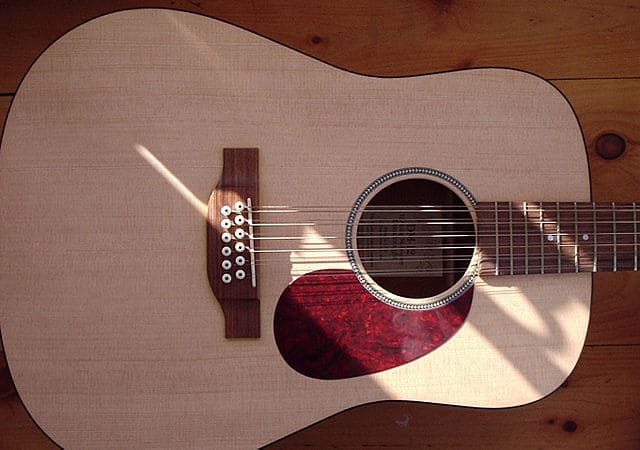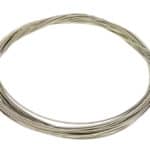It’s a common misconception that the 12-string guitar is majorly different from its six-stringed cousin.
Aside from minor anatomical differences (mainly in the size of the headstock and the number of strings to tune), both guitars are quite similar.
But can you use a 12 string with only 6 strings on?
Definitely, there are minor differences in the tone and the feel of the guitar, but it’s pretty much the same. Allow me to explain.
Due to the tuning of a 12 string guitar, being EADGBE for the thicker strings and the thinner strings simply being tuned an octave above these strings, (meaning they’re also thinner strings) you can use only the standard strings you’d use on a normal 6 string guitar and play your 12 string the same.
Would a 12-string guitar be playable with only 6 strings?
It certainly would. There are some differences in the build of a 12-string guitar when compared to a six-string guitar, but they mostly amount to the feel of the guitar being different.
You will notice that strings might feel further apart, but you get used to the change quickly and the same goes for switching back to a regular six-string guitar. Here are some major differences though:
- Wider and thicker neck, to accommodate the extra space needed for those extra strings and the tension they cause.
- Shorter scale length, which helps minimize the added tension. It’s usually only a fraction of an inch shorter, but the difference is noticeable.
- 12 strings tend to use lighter gauge strings than the six-string guitars.
- The action on a 12-string guitar is lower than on a six-string, this aids in making fretting the extra strings more manageable.
- A less obvious difference is the extra reinforcement in the construction.
Could using a 12-string guitar with only 6 strings damage it?
Since you’re decreasing the tension on your guitar, it should have little to no long-term negative effects on the guitar body itself.
Guitars are designed to resist tension, but they aren’t going to buckle in on themselves when there is less or no tension.
Otherwise, you might have to worry about your guitar breaking anytime you decide to leave it unstrung for a while.
Would you need to readjust the neck of a 12 string to use it with 6 strings?
The action of the guitar’s neck is set lower to accommodate the 12 strings.
If you add only 6 strings, there will be less bowing on the neck of your guitar which may lead to strings buzzing on the frets.
You would probably need to adjust the action of the neck to allow it to bow a little easier, don’t worry, it won’t hurt your guitar.
You’re using fewer strings than the usual amount, so you need to account for that.
Are there any downsides to using a 12 string with 6 strings?
So it’s starting to look like you might find it even easier to play a 12-string guitar than a six-string, but there are some challenges.
The wider neck means further stretching for the fingers, even if you’re using only 6 strings, this is less comfortable.
The body of the guitar is heavier, so it will be harder to play for long periods as well.
This is due to the anatomy of a 12-string guitar being different from that of a six-string. Its structure is designed to withstand the higher string tension needed, so a 12-string guitar generally has a thicker truss rod and some in place.
Is there a way of converting a 12-string guitar to 6 strings permanently?
The main thing that differentiates a 12-string guitar from its six-string counterpart, aside from the number of strings used, is the headstock and neck width.
If you wanted to, you could replace the neck with a six-string guitar neck.
You could also just leave the six strings on permanently since having fewer strings on your guitar doesn’t seem to have any long-term detrimental effects.
However, if you want to have that genuine six-string guitar feel, the better idea is to replace the neck. You can still try to maintain that lower tension by trying to find a neck with a matching scale length.
Is that mod reversible?
As long as you don’t make any unchangeable adjustments to the shape and structure of your guitar, it should be reversible.
If we’re only changing the neck of our guitar, you can always switch the old one back again later.

Hello there, my name is Ramiro and I’ve been playing guitar for almost 20 years. I’m obsessed with everything gear-related and I thought it might be worth sharing it. From guitars, pedals, amps, and synths to studio gear and production tips, I hope you find what I post here useful, and I’ll try my best to keep it entertaining also.





